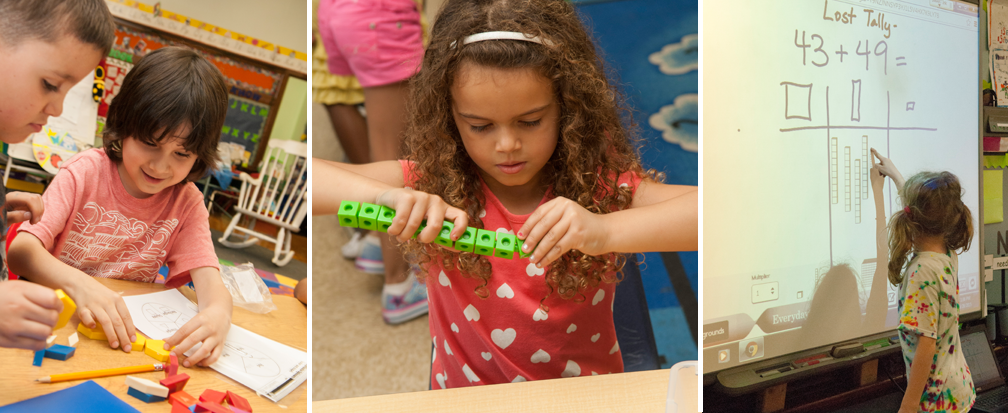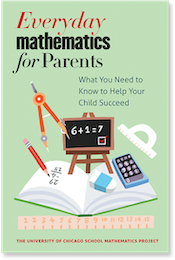Computation
How does Everyday Mathematics address computation?
Everyday Mathematics recognizes that, even in the computer age, it is important to teach children how to compute "by hand". The curriculum is designed to provide all students with a variety of dependable and understandable methods of computation. These methods include traditional algorithms, as well as alternative algorithms that many students find easier to learn and use with greater accuracy. Throughout the program an emphasis is placed on developing computational skills through application-based problem solving.
Instead of requiring all students to learn the same computation procedure, by rote, at the same time, Everyday Mathematics aims to make students active participants in the development of algorithms. This process begins by developing students' background skills and knowledge in three areas: basic fact skills, place value skills, and their understanding of the meanings of operations. Once these background skills are in place, and before students are taught standard algorithms, they are encouraged to invent and share their own ways for doing operations.
Giving students the opportunity to invent and share their own operational procedures has the following benefits:
- Children are more motivated to solve problems when they have to come up with their own strategies instead of just following a rote procedure.
- Children with different learning styles are given problem-solving options. They may choose to use manipulatives, drawings, oral and written words, or symbols to represent and solve problems.
- Children become adept at changing problems into easy-to-solve equivalent problems. For example, 30-17 is equivalent to 30-10-7.
- When children explain and discuss their own algorithms with other children, they internalize what the operations mean and learn from each other. Children's discussions also provide valuable information that can help teachers assess the development of their numerical thinking.
After children have had opportunities to experiment with their own operation procedures, they are introduced to standard algorithms and a number of alternative algorithms. Multi-digit addition and subtraction algorithms are formally introduced in second grade, and most children should be proficient in the use of at least one algorithm for each operation by the beginning of fourth grade. Division algorithms are introduced in fourth grade, with proficiency expected in fifth grade.




